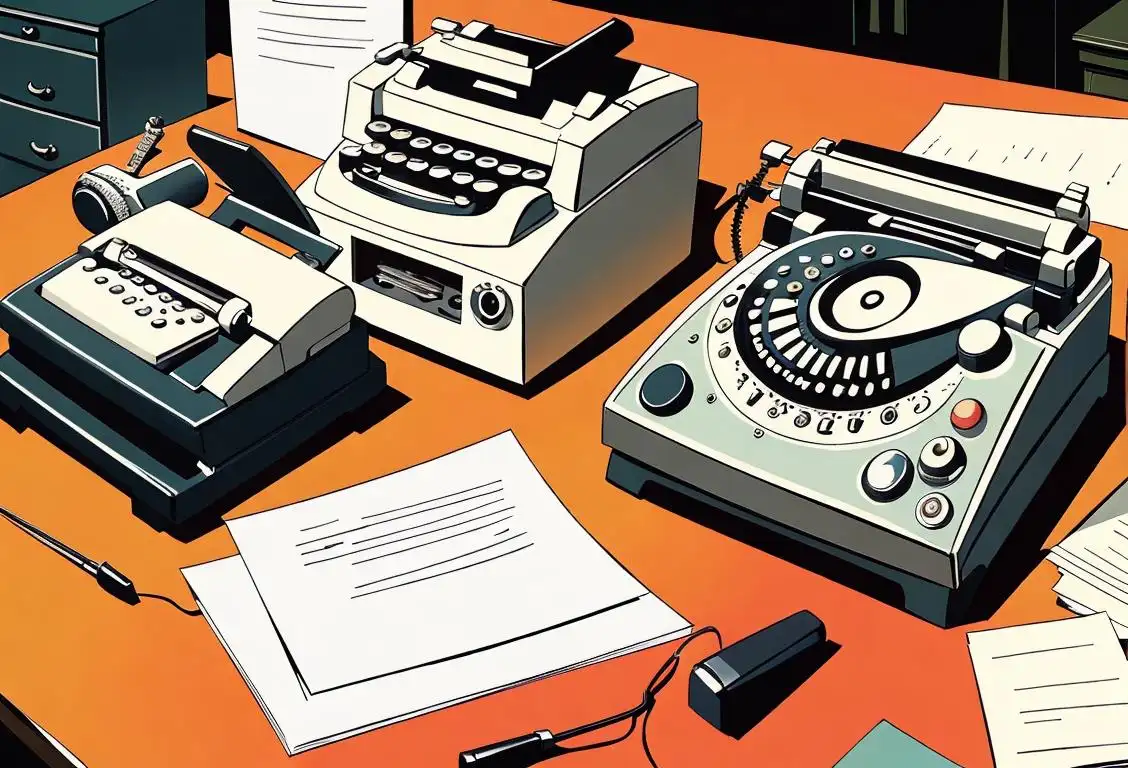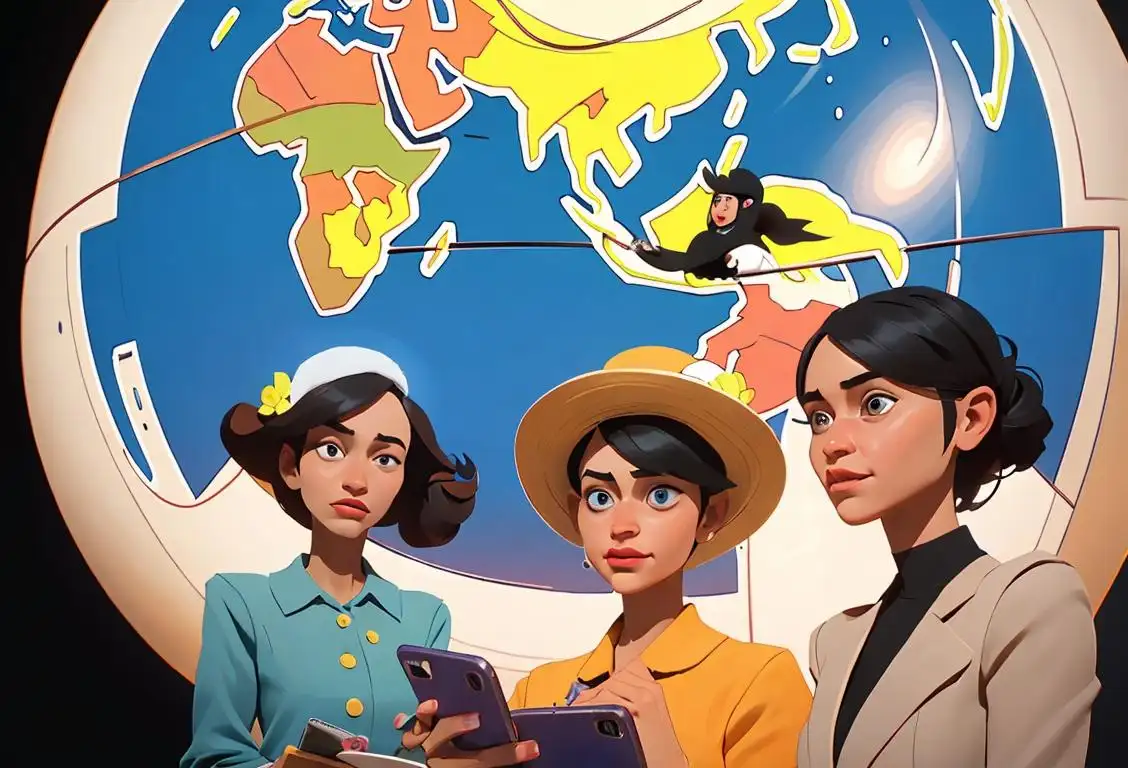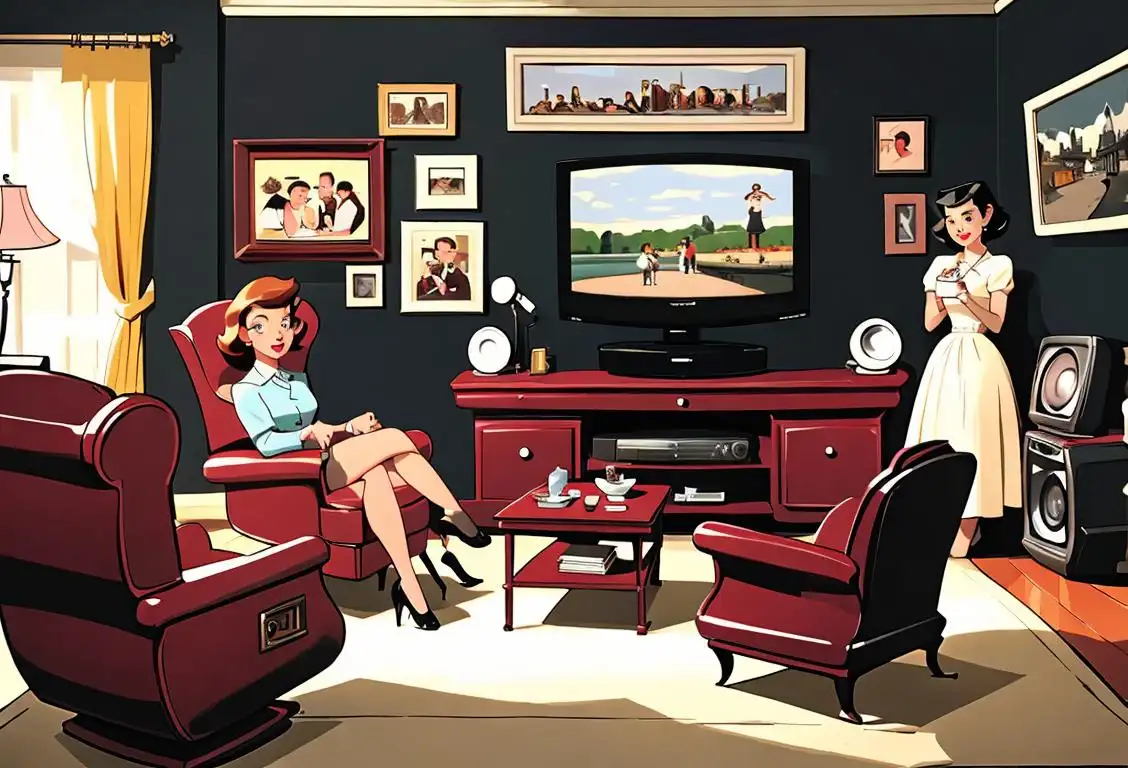National Fax Machine Day

Ah, National Fax Machine Day! The day when we celebrate that clunky, retro device that made our lives so much easier... or did it? Get ready for a trip down memory lane as we delve into the fascinating history of the fax machine.
When is Fax Machine Day?
It's national fax machine day on the 1st February.
The Birth of a Fax-tastic Invention
Before we dive into the realm of online and virtual communication, let's take a moment to appreciate the humble fax machine. Invented way back in the 19th century by Alexander Bain, the fax machine revolutionized the way we transmitted documents over long distances.
Originally known as the 'telegraphy copying telegraph,' which is a real mouthful, the fax machine worked by scanning an image or document, converting it into electrical signals, and transmitting it to a receiving machine at the other end.
Faxing Goes Digital
As technology evolved, so did the fax machine. We bid farewell to the clattering and whirring of the old analog fax machines and welcomed the sleeker and more efficient digital fax technology. No longer did we have to deal with smudged copies or paper jams (well, most of the time).
Fax machines became a staple in offices worldwide, enabling us to send important documents, memes, and doodles to our colleagues and even to complete strangers. We honed our faxing skills, learning to adjust the contrast, resolution, and paper size with expert precision.
The Fax Machine Gets Internet-savvy
With the rise of the internet, fax machines faced some fierce competition. Sending an email or uploading a document to the cloud became the norm for digital communication. But fear not, dear fax enthusiasts, for the fax machine adapted to the times and got itself some internet-savviness.
Thanks to online faxing services, we can now send and receive faxes directly from our computers or smartphones. No more need for those clunky dedicated fax machines taking up valuable desk space. The world of faxing has truly gone digital.
Celebrating National Fax Machine Day
Now that we've had a glimpse into the history of the fax machine, how can we celebrate this illustrious day? Here are a few suggestions:
- Send a fax to a friend or colleague just for the sheer nostalgia of it. Remember the excitement of waiting for that faint beeping sound indicating a successful transmission?
- Host a 'Fax It Forward' party. Get together with your loved ones and take turns faxing silly images or messages to different fax machines around the world. Who knows where your masterpiece may end up?
- Take a moment to appreciate the wonders of modern technology. From clunky machines to sleek digital interfaces, we've come a long way in the world of communication.
Did You Know?
In the modern business world, faxing may seem a little outdated, but it still has its uses. In some industries, such as healthcare and legal, faxes are often used for legally binding documents due to their secure transmission.
History behind the term 'Fax Machine'
1846
The telegraph lays the foundation.
The history of the fax machine dates back to 1846 when the telegraph revolutionized long-distance communication. The telegraph allowed messages to be sent over long distances by transmitting electrical signals. This technology laid the foundation for future developments in fax transmission.
1843
Birth of the telegraph
In 1843, the telegraph, a system for transmitting messages over long distances using a wire, was first invented. This revolutionary technology allowed people to send messages quickly and efficiently, but it required trained operators to interpret and translate the messages into Morse code.
1843
Electric Telegraph
The first step towards the development of the fax machine began in 1843 when Samuel Morse demonstrated the electric telegraph. This invention allowed messages to be transmitted over long distances via electrical signals sent through a wire. However, it was limited to transmitting only textual messages.
1846
Fax-like Messaging
The concept of transmitting images through electrical signals took a leap forward in 1846 when Alexander Bain developed a device called the 'fax-like' messaging system. It used a pendulum-based mechanical scanning mechanism to reproduce images. However, this device was unable to transmit images over long distances.
1865
Facsimile theory proposed
In 1865, a Scottish clockmaker named Alexander Bain proposed the concept of a facsimile machine, which could reproduce images and writing using electrically conductive materials. This theory paved the way for the development of a practical machine that could transmit documents and pictures over long distances.
1964
The Xerox Telecopier 144 sets the stage.
In 1964, the Xerox Corporation introduced the Xerox Telecopier 144, which is considered the first commercialized fax machine. It used analog technology to transmit printed material through telephone lines. This invention marked a breakthrough in telecommunication and initiated the era of fax machines.
1964
First commercial fax machine
The world's first commercial fax machine, called the Xerox Magnafax Telecopier, was introduced in 1964. It used telephone lines to transmit scanned images of documents, enabling businesses to send and receive faxes across long distances. The Magnafax Telecopier was a significant step in the evolution of fax machines and sparked their popularity.
1924
Wirephoto
The next notable development in fax machine history came in 1924 with the invention of the 'wirephoto' system by Édouard Belin. This system used a rotating cylinder to scan images and convert them into electrical signals. The signals were then transmitted over long distances through telegraph or telephone lines. The receiving end used a similar cylinder to reproduce the image.
1985
Fax machines become more accessible.
By 1985, fax machines had become more accessible and affordable to businesses and individuals alike. The advancement of technology led to the introduction of smaller and more user-friendly fax machines, making them a popular means of communication for transmitting documents and images over long distances.
1997
Internet faxing revolutionizes the industry.
The introduction of internet faxing in 1997 brought about a significant shift in the fax machine industry. With internet faxing, faxes could be sent and received through email, eliminating the need for a physical fax machine. This advancement made faxing even more convenient and reduced reliance on traditional fax machines.
1966
Xerox LDX
The true precursor to modern fax machines came in 1966 with the introduction of the Xerox Long Distance Xerography (LDX) system. The LDX system revolutionized fax communication by using a laser beam to scan and reproduce images. This advanced technology allowed for faster and clearer transmission of documents.
1980s
Fax machines go mainstream
In the 1980s, fax machines started to gain widespread popularity and become a common office tool. As technology improved, fax machines became more affordable, smaller, and easier to use. The ability to transmit important documents quickly and securely without relying on traditional mail or courier services made fax machines invaluable in many industries.
2000s
Decline in fax usage begins.
In the early 2000s, the rise of digital communication technologies such as email and instant messaging led to a decline in the usage of traditional fax machines. The convenience and speed of digital alternatives gradually replaced the need for fax machines, marking a shift in the way businesses and individuals communicate.
1996
Internet faxing
With the advent of the internet, faxing underwent another transformation. In 1996, internet faxing services emerged, allowing users to send and receive faxes directly from their computers or email accounts. This new approach eliminated the need for physical fax machines and gave users greater flexibility and convenience in managing their fax communications.
1979
Commercial Fax Machines
In 1979, the first commercial fax machine, the Xerox 800, was released. This machine made fax communication accessible to businesses and individuals worldwide. It utilized telephone lines to send and receive documents, enabling the rapid transmission of printed materials such as contracts, letters, and diagrams.
1980s
Fax Machine Popularity
During the 1980s, the popularity of fax machines surged as businesses recognized their efficiency and convenience. Fax machines became a staple in offices around the world, facilitating instant communication and document sharing. This period marked the widespread adoption of fax machines as an essential tool for business communication.
Present
Digital faxing and decline of traditional fax machines
Today, traditional fax machines have largely been replaced by digital faxing technologies. With the widespread use of smartphones and cloud-based services, users can easily send and receive faxes using mobile apps or online platforms. The convenience, cost-effectiveness, and eco-friendliness of digital faxing have contributed to the decline of traditional fax machines.
Present
Fax remains a relevant communication tool.
Although fax machines have experienced a decline in usage, they remain a relevant communication tool in certain industries, particularly where legal and official documents require a physical signature. Many businesses and organizations still rely on fax machines for secure transmission of sensitive information due to the established infrastructure and legal recognition of faxes as official documents.
1990s
Digital Revolution
The 1990s witnessed a digital revolution in fax technology. Traditional analog fax machines were gradually replaced by digital fax machines, which offered higher speeds, better image quality, and additional features such as storage and network integration. This transition paved the way for the modern fax machines we use today.
Present
Digital Faxing and Beyond
In the present day, fax communication has evolved even further. Fax machines have largely transitioned from physical devices to digital faxing solutions. Online fax services allow users to send and receive faxes through email or web interfaces, eliminating the need for dedicated hardware. Despite the advent of email and other digital communication methods, faxing remains relevant, especially in industries where secure and legally binding document transmission is required.
Did you know?
Did you know that the term 'fax' is short for facsimile, which means an exact copy or reproduction? So when you fax a document, you're essentially sending an exact copy of it from one machine to another!Tagged
nostalgia communication technologyFirst identified
1st February 2017Most mentioned on
1st February 2017Total mentions
52Other days
Fax Machine Day
Please Text Me Back Day
Telephone Day
Internet Day
Television A Historic Day
Tv In The Same Day
World Emoji Day
Landline Telephone Day
Ipod Day
Emoji Game Day








